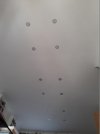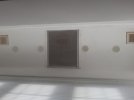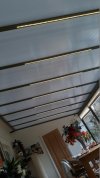That is worth watching as he does get across how insanely hard farming can be - and he does readily admit he has wealth to fall back on.My neighbour watches Clarkson's Farm instead, and says all his friends do, too - which is ironic, since Clarkson gets paid more per episode than most farmers will make in a lifetime.
-
 The forum software that supports hummy.tv has been upgraded to XenForo 2.3!
The forum software that supports hummy.tv has been upgraded to XenForo 2.3!
Please bear with us as we continue to tweak things, and feel free to post any questions, issues or suggestions in the upgrade thread.
You are using an out of date browser. It may not display this or other websites correctly.
You should upgrade or use an alternative browser.
You should upgrade or use an alternative browser.
Electricity blues... and greens, and reds...
- Thread starter mike_m
- Start date
mike_m
Active Member
Yes, I agree - we were glued to it.That is worth watching as he does get across how insanely hard farming can be - and he does readily admit he has wealth to fall back on.
Just to be clear - Are these rated as dimmable?a high minimum threshold when dimmed - their lowest value is still quite bright
I must confess that we have no dimmables at all. In our previous house we did have some halogens on dimmers, but the dimmers kept failing and eventually I just put a switch in.
Now rooms with variable needs just have a selection of lights to get cosy or bright.
Black Hole
May contain traces of nut
Yes, even the "dimmables". Non-dimmable don't dim as such, they're either on or off or complaining. And just to be doubly clear, the old traditional leading-edge triac-with-trigger-diac dimmer switch isn't suitable for dimmable LED bulbs (which is bloody stupid if you ask me).Are these rated as dimmable?
The best bulbs for that kind of function are the ones with a remote control for setting colour and brightness, but who wants to fit loads of those???
everthewatcher
Forum Supporter
Philips do the WarmGlow line of dimmable LEDs that get 'warmer' as they're dimmed.The cooler it gets, the more red it appears - the colour temperature changes as it dims
everthewatcher
Forum Supporter
Don't know where the 5V is from. The forward voltage of a blue or white LED is 3V or so and in 12V lamps will usually be wired in strings of two or three LEDs in series. They'll then be current-driven, hopefully using a switching constant-current supply, but in low-power (<2W) ones I've seen linear regulators and in cheap ones just a series resistor.the conversion from say 12v to 5v
Black Hole
May contain traces of nut
At that price, they had better reach their rated life! My experience of LED bulbs has not been great on reliability, but I admit I've been shopping at the budget end.Philips do the WarmGlow line of dimmable LEDs that get 'warmer' as they're dimmed.
everthewatcher
Forum Supporter
That could be the problem.My experience of LED bulbs has not been great on reliability, but I admit I've been shopping at the budget end.
I've had LED lamps in all the on-all-evening GLS lights since Spring 2016, mostly TCP-branded LEDs with Nichia LEDs. I've had no failures but I've had two >15W B&Q Diall OB ones drop enough in output after a couple of years for them to be replaced despite being effectively in free air, and the TCP-branded ones had dropped by 15-20% last time I measured any.
I've no experience of the LED 'filament' ones but from what I've read recently they should be longer-lived than the ones with the LEDs in the base.
EEPhil
Number 28
I’ve had the £3 ones from Morrisons . So far most have been okay. One seems to flicker during the first few minutes of operation. Must swap that into a little used room! More reliable than the free low energy bulbs (those with 2 or 3 tubes in them) sent to us by various people. You get what you pay for!My experience of LED bulbs has not been great on reliability, but I admit I've been shopping at the budget end.

Black Hole
May contain traces of nut
Yeah, but they still quote 10,000+ hours reliability!That could be the problem.
And that's why you keep the receipts and the package with the claim and hit them for refundsYeah, but they still quote 10,000+ hours reliability!
Hmm, LEDs. Volatile. Beware which LEDs you buy, and from who.
They can be superb. I've been using them throughout the house since 2011 for a massive saving in electricity, with a step reduction in the bill!
I'm also always on the look out for a better LED and trying samples as they appear on the market. Expect to aim for a genuine 100 lumen per Watt, any less from a cheap lamp is a false economy.
They can be switched as many times as you like (unlike a CFL fluorescent), but don't put high frequencies through them (eg chopper dimmer, or a bad connection) since many (the cheapest) use a simple dropper capacitor as the current source.
If they run hot the life is short, sometimes only lasting for days. Big heat-sinks help a lot, but can be ugly.
Ergo, use lots of low power LEDs for thoughtfully (tastefully?) distributed lighting on several switches, even different colour temperature zones. eg the big bay window at the end of our kitchen has 6000K GX53 to match the daylight but the rest of the kitchen is 3000K.
Forget two-wire series dimmers (L-in, L-out) they are a waste of space, but three wire dimmers (L-in, L-out, NN) and motion-detector switches (with a relay) are OK. Some rewiring needed in most houses for this. I did quite a lot.
Recently after about nine to ten years the initial 12-off batch of 3W GX53 LEDs arranged as 4 on each switch in the kitchen were down to about 50% brightness, and dimming quite noticeably in the final few months. I estimated they had done close to 40,000 hours, but the 12 off 4W GX53 of a different make from a year later in the living room are closer to 25,000hours and are being replaced in the next few days.
Unfortunately I've needed to replace with 5W GX53 because of a lack of good quality 3W. Manufacturers seem to think "Bigger number is better" NO! I need the right light not too bright a light.
The topic is actually a minefield with so many of them claiming long life but ignoring the fact they are running at way over the maximum mounting temperature recommended by the chip manufacturer for their quoted life.
When I was doing this for work, the claim was a 55C mounting surface typically offered 30,000 hours to half brightness. However too many bulb run at about 80C (hottest point measured with an optical thermometer) and often only last a few months, maybe 300 hours instead of 30,000. Chip manufacture has improved a lot since then, but the preferred operating temp is not a lot higher.
Forget guarantees unless you can find a supplier that's been doing it for several years. Often it is one container load brought in cheap, dumped on the market through Az or Eb and seller vanished after a few months with no come-back.
They can be superb. I've been using them throughout the house since 2011 for a massive saving in electricity, with a step reduction in the bill!
I'm also always on the look out for a better LED and trying samples as they appear on the market. Expect to aim for a genuine 100 lumen per Watt, any less from a cheap lamp is a false economy.
They can be switched as many times as you like (unlike a CFL fluorescent), but don't put high frequencies through them (eg chopper dimmer, or a bad connection) since many (the cheapest) use a simple dropper capacitor as the current source.
If they run hot the life is short, sometimes only lasting for days. Big heat-sinks help a lot, but can be ugly.
Ergo, use lots of low power LEDs for thoughtfully (tastefully?) distributed lighting on several switches, even different colour temperature zones. eg the big bay window at the end of our kitchen has 6000K GX53 to match the daylight but the rest of the kitchen is 3000K.
Forget two-wire series dimmers (L-in, L-out) they are a waste of space, but three wire dimmers (L-in, L-out, NN) and motion-detector switches (with a relay) are OK. Some rewiring needed in most houses for this. I did quite a lot.
Recently after about nine to ten years the initial 12-off batch of 3W GX53 LEDs arranged as 4 on each switch in the kitchen were down to about 50% brightness, and dimming quite noticeably in the final few months. I estimated they had done close to 40,000 hours, but the 12 off 4W GX53 of a different make from a year later in the living room are closer to 25,000hours and are being replaced in the next few days.
Unfortunately I've needed to replace with 5W GX53 because of a lack of good quality 3W. Manufacturers seem to think "Bigger number is better" NO! I need the right light not too bright a light.
The topic is actually a minefield with so many of them claiming long life but ignoring the fact they are running at way over the maximum mounting temperature recommended by the chip manufacturer for their quoted life.
When I was doing this for work, the claim was a 55C mounting surface typically offered 30,000 hours to half brightness. However too many bulb run at about 80C (hottest point measured with an optical thermometer) and often only last a few months, maybe 300 hours instead of 30,000. Chip manufacture has improved a lot since then, but the preferred operating temp is not a lot higher.
Forget guarantees unless you can find a supplier that's been doing it for several years. Often it is one container load brought in cheap, dumped on the market through Az or Eb and seller vanished after a few months with no come-back.
Last edited:
Hmm, they are as fragile as old tungsten filament bulbs, and cast an unpleasant patterned light. We tried some in reading lamps, but SWMBO soon gave them all to the Charity shop where they used them as part of a window display "designer effect" lighting!LED 'filament' ones
Black Hole
May contain traces of nut
But that's the point, innit? It sounds like you've dropped a huge amount of cash on lamps, not only in service but also for evaluation, particularly at the leading edge when unit cost was high. Then there's your rewiring – how much would that cost if it wasn't DIY (bearing in mind DIY house electrics are frowned on these days and god alone knows what will happen when I try to sell)? Granted the cost of electrickery is going up, but what's your payback time?Some rewiring needed in most houses for this. I did quite a lot.
The bulk of the housing stock isn't going to be rewired any time soon. Manufacturers should be supplying what works in the current environment, and possibly the likes of Philips are... at a cost. It's a leap of faith to spend £10 on a Philips bulb when others are £2.
everthewatcher
Forum Supporter
Not the clear 'decorative' ones but the frosted ones which are fairly new. The substrate the LED dies are mounted on is glass so not that fragile.Hmm, they are as fragile as old tungsten filament bulbs, and cast an unpleasant patterned light. We tried some in reading lamps, but SWMBO soon gave them all to the Charity shop where they used them as part of a window display "designer effect" lighting!
The mainstream manufacturers, e.g. Philips, are now doing them. But even then there are different levels of quality - see this YT video from Big Clive.
Payback time was about a year considering how long the LEDS last compared with incandescent or CFL.But that's the point, innit? It sounds like you've dropped a huge amount of cash on lamps, not only in service but also for evaluation, particularly at the leading edge when unit cost was high. Then there's your rewiring – how much would that cost if it wasn't DIY (bearing in mind DIY house electrics are frowned on these days and god alone knows what will happen when I try to sell)? Granted the cost of electrickery is going up, but what's your payback time?
The bulk of the housing stock isn't going to be rewired any time soon. Manufacturers should be supplying what works in the current environment, and possibly the likes of Philips are... at a cost. It's a leap of faith to spend £10 on a Philips bulb when others are £2.
The house was properly rewired soon after I bought it in 1971 (Previously lead covered rubberised cloth insulation or VIR! Meter was going round with nothing plugged in!) and we added lots of switches and roses instead of the single light per room and also lots of sockets and rings.
In 2011 we lined all the ground floor ceilings with insulated plasterboard and radiating from each original rose position are plastic conduits inside the insulation to the GX53 positions. House wiring is left untouched, ceiling roses merely papered over to allow future access. Suddenly the bedrooms are cool enough and the gas bills dropped 25%. Changing to a condensing boiler in 2006 had previously knocked off 30%.
The bay window replaced a big old porch as part of the kitchen refurb (proper sparky also checked the rest and fitted a modern multi-RCD consumer unit) and the bay now has worktop and induction hob filling it, with heat-exchanger extractor+fresh-air-inlet fans all hidden above in the new pitched roof (almost no condensation when cooking!).
New conservatory 12V strip leds are the least reliable, very short life for not much use, and they have soldered joints every 500mm, which fail. This is our third set in six years, maybe 200-300 hours use each time before dimming or too many dropper resistors going open circuit..
Some pictures. Mods please feel free to delete these soon if they take too much room, but they illustrate how LEDs MIGHT be used.





Last edited:
Could it be the temperature variation that is killing those?New conservatory 12V strip leds are the least reliable,
I put a couple of tracks in ours with LED spots on them, but they were expensive and don't get used much, so have been OK so far (5 years or so). (Our conservatory is perhaps less habitable than yours though, looking at your furnishings
 )
)The solder failure between 500mm segments is because of thermal movement of the mounting surface they are stuck to expanding and contracting, but this is different from the LED ageing.Could it be the temperature variation that is killing those?
I put a couple of tracks in ours with LED spots on them, but they were expensive and don't get used much, so have been OK so far (5 years or so). (Our conservatory is perhaps less habitable than yours though, looking at your furnishings)
When it's hot in there, LEDs are Off as its already bright enough, so even in hot summer they are actually at a lower temp than when lit! The blinds are effective.
The rolls of LEDs are very cheap however and some (not many) even have a decent double sided sticky tape.
However, I'm not happy with this roof, the previous one I fitted, from Omega (Roofing) Plastics, was infinitely better because it had dichroic heat reflecting inserts in the polycarbonate channels. But the old conservatory was a Wickes wood one and it rotted and the glazing leaked, never again. I was mislead with this new one built for me, and then the company went bust, so it would have cost me significant time and money to replace/insert the roof with IR reflecting as before.
mike_m
Active Member
Loved that video. Much of the electronics was over my head - or rather, lost in my dim memories of physics A-level - but still fascinating! Thanks.The mainstream manufacturers, e.g. Philips, are now doing them. But even then there are different levels of quality - see this YT video from Big Clive.
Ours is glass, doubleglazed, tint catches about half the light and heat. Still gets hot as we don't have blinds, but there's plenty of ventilation available.However, I'm not happy with this roof
